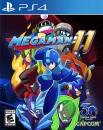The Blockbuster

The concept of blockbusters games is widely know and agreed. Those are the games with highest budgets and most costly to produce and market. They are reserved by big publishers and have very big teams working behind it. They are usually the ones that ends selling the most as well. Nowadays even among AAA games publishers are starting to create a new concept of AAAA to make even more daring games in therms of boths scope and specs.
The Indie

An indie game in other hand is an alias for independent game i.e. games made without any big publisher behind it. They are made by small teams (sometimes only one developer), and rely mostly in the skills and creativity of their developers. Most of them are released half-assed and buggy and end into obscurity, but sometimes an indie can make a big impact and become a cultural icon.
The Middle Sized Game
Now, let's move to a more... complicated nature. What to do with middle sized games? After all, between Blockbusters and Indies there is an infinity of games released. Let's take a look into them.
First, let's start with a very popular ""indie"" game: Ori. Ori was created by a very small core team of only 10 people, it has a smaller budget and for a game that only last for about 10 hours its development cycle of 4 years is quite large. Is Ori a indie? Well, not exactly. While Ori might be closer of indie it doesn't change the fact Moon studios was working for Microsoft, they had a big publisher to back them up both financially and technically that's rules out them the title of "independent game". Ori is what I would call a C-tier game, a game with a indie-feeling and may even an indie budget, but that was published by a major gaming software company. Other examples that comes in mind would be Journey, Child of Light and Little Nightmares.
Following, we have the B-tier games. Those are game that are closer to blockbuster in therms of production value, but are clearly less ambitious and have smaller scope. They are developed by bigger teams compared to C-tier games and Indies, but still looking quite outdated or even ugly compared to high production Blockbusters. Game that may fall into B tier are Life is Stranger (started with 10 core developers, but scaled fast once SE started backing them up), Rayman Legends, Octopath Traveler and Knack.
Finally we have the A-tier games, which is just an euphemism to "everything else a big studio puts out and isn't as costly as AAA game". Nintendo has a plethora of A tier games some of them are just spin offs of their AAA games. Many Japanese games now lies on this category, as they can't compete with the budgets of western games unless they starting breaking international audiences. Examples would be Valkyrie Chronicles, Pikmin, Catherine Fullbody, No More Heroes, Braverly Default. One generation ago I would just put them along with AAA in the Blockbuster category, but in the current state of the market I'm not really sure if we can put them together. The budget and production value disparity become so big than even AAA games sometimes doesn't like AAA compared to others, as such I'm delimiting them as mid sized.
This is a fairly subjective matter, so I created this thread to listen your opinions. What's your definition of middle sized games, and what games you would choose to define each category? Do you see my C-tier list as nothing but indies?




















